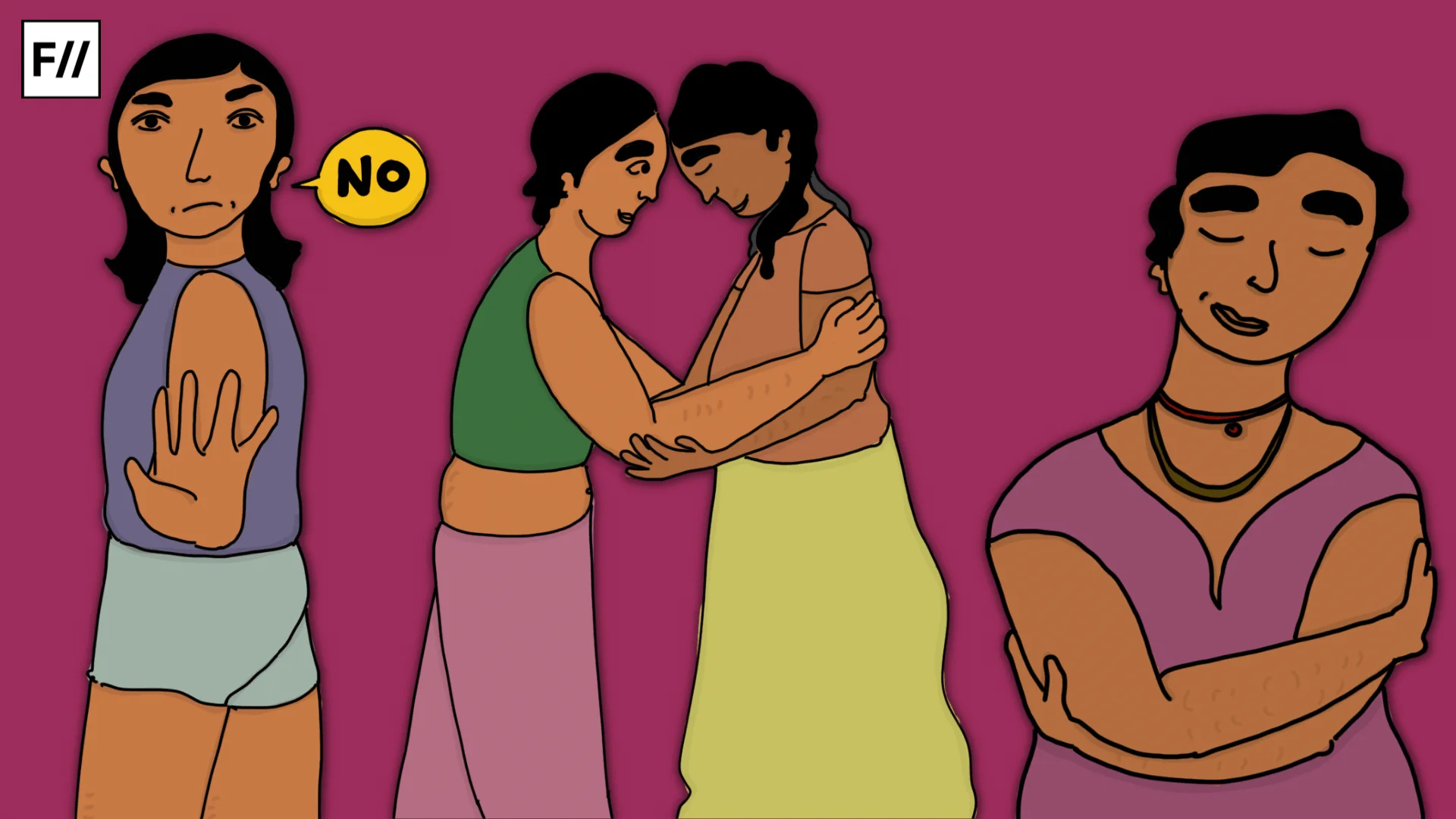Vaginal spotting is any bleeding outside of the menstrual cycle amongst people in the reproductive age group. Menstruation or periods occur every 24-38 days when the uterus sheds its lining. Period bleeding lasts for a few days or up to a week. But any bleeding outside of the period window is popularly known as vaginal spotting. In medical terms, vaginal spotting is also called metrorrhagia falling under the category of abnormal vaginal/ uterine bleeding.
Studies have shown that up to one-third of women experience abnormal uterine bleeding in their life, with such deviations most commonly occurring at menarche (first menstrual bleeding) and perimenopause (before menopause). Abnormal vaginal bleeding can sometimes be acute or chronic (repetitive) in nature.
Rather than a medical concern in itself, vaginal spotting may also be a symptom with various possible causes. The amount of blood and the type depends on the condition and age of the person. For some, it may be a few droplets while for some others, it may be a little heavier.
Some people who menstruate regularly may experience light bleeding or spotting during ovulation due to changes in hormonal levels. It usually occurs in the middle of the menstrual cycle, outside regular periods. The blood is light pink or dark brown in colour. Ovulation spotting may accompany with other ovulation symptoms like breast soreness, lower abdominal or pelvic pain, increased sexual desire, bloating, changes in body basal temperature, etc.
Spotting after ovulation however, is one of the early signs of pregnancy. It is called implantation bleeding/ spotting after the fertilized egg attaches to the inner wall of the uterus. The resulting light brown or pink spotting can last for two days. If vaginal spotting occurs outside the ovulatory period i.e., usually 11-21 days after the first day of the last period ( however this may vary), or more than once during a cycle, then it can be a cause of concern.

Causes of vaginal spotting
Premenarchal age: Some spotting may be seen before the first menstruation, which is common and harmless. Other causes may be foreign body induced irritability, infection, sexual abuse, precocious puberty, trauma, neoplasm, etc.
Adolescent age: Thyroid, coagulation disease, pregnancy complication, sexual abuse, polyp, neoplasm, Polycystic ovary syndrome (PCOS), etc., could lead to vaginal spotting in adolescents.
Reproductive age: In this age group, the side-effects of using birth control can lead to spotting (also known as breakthrough bleeding) that is most common in the first 3 months of using hormonal contraceptives. Infections including Sexually Transmitted Infections (STI) such as human papillomavirus (HPV), gonorrhoea, and chlamydia, or conditions like PCOS, thyroid, pregnancy complications, polyp, pelvic infections, urinary tract infections, cancer in reproductive organs, effects of medications, and the like may also cause vaginal spotting in people of this age group.
Menopausal age: Senile endometritis, thyroid, cancer, polyp, etc., may lead to vaginal spotting in this age.
Sometimes, irregular bleeding also occurs due to lifestyle factors like stress, weight loss, or travel, which is not as serious as it is temporary and due to hormonal changes, medications, and certain changing conditions. Vaginal spotting may or may not be accompanied by other symptoms, depending on the cause behind it. Some common accompanying symptoms among others include: abdominal pain, irregular periods, pelvic discomfort, and sudden dizziness.
Although abnormal vaginal bleeding can stem from a variety of causes ranging from stress to cancer, usually it is related to the use of contraceptives and possible pregnancy. Because of this association, it can be difficult for some unmarried menstruating individuals to consult a doctor

Also read: What Is Vaginitis?: Unpacking The Basics Of The Most Common Set Of Vaginal Infections
Diagnosis and treatment
Dr. Sujata Khadka, Obstetrician-Gynaecologist (OBGYN) advises seeing a doctor in case of any kind of bleeding outside of regular periods. “Any kind of spotting or bleeding outside regular periods should be medically checked as it can be an early sign of cancer“, she says. The individual should note characteristics of the bleeding and its duration for helping in better diagnosis.
The type of treatment will depend on the cause and the specific needs of the person experiencing metrorrhagia. Both local and systemic problems need to be inquired into to find the causes of abnormal vaginal bleeding. After ruling out pregnancy, a satisfactory physical examination, including a vaginal and/or rectal examination, may be needed for sound diagnosis.
Sexual activity, contraception and stigma around vaginal spotting
Although abnormal vaginal bleeding can stem from a variety of causes ranging from stress to cancer, usually it is related to the use of contraceptives and possible pregnancy. As a result of this association, it can be difficult for some unmarried, menstruating individuals to consult a doctor.
This precludes many individuals from getting even routine checkups. It is important for the doctors to make patients feel safe, especially the young, unmarried individuals. It is important to ask and diagnose them with no bias or judgment in a discreet way. A simple change in approach may start with changing the question ‘Are you married?’ to ‘Are you sexually active?’, as Dr Niveditha Manokaran suggests
Especially when for the diagnosis, the gynaecologist asks questions about general health, particularly about menstrual cycle and sexual activity, it may be uncomfortable or exhausting for some individuals owing to the fact that there are very few assuring, safe spaces where private information is noted without moral judgment.
In many Global South countries, sex outside marriage is still considered a taboo. This patriarchal perception is reflected in the judgmental treatment of some gynaecologists towards young, unmarried females. A study in 2021 among 709 responders found out that 45 per cent of them felt judged/shamed during gynaecologist consults.

This precludes many individuals from getting even routine checkups. It is important for the doctors to make patients feel safe, especially the young, unmarried individuals. It is important to ask and diagnose them with no bias or judgment in a discreet way. A simple change in approach may start with changing the question ‘Are you married?’ to ‘Are you sexually active?’, as Dr Niveditha Manokaran suggests.
“Health professionals who are conducting medical training need to be taught to ask non-judgmental questions, using sex-positive language. In that way, we can change the future and the way people feel about approaching doctors for this matter,” she adds.
Also read: What is Menorrhagia?: Understanding The Reasons For Prolonged, Heavy Menstrual Bleeding
Featured Illustration: Ritika Banerjee for Feminism In India
About the author(s)
Shuvangi is an independent writer and researcher based in Kathmandu, Nepal




